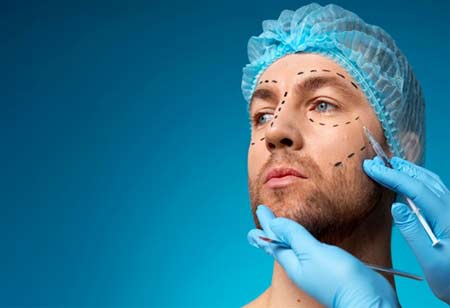Thank you for Subscribing to Healthcare Business Review Weekly Brief
Be first to read the latest tech news, Industry Leader's Insights, and CIO interviews of medium and large enterprises exclusively from Healthcare Business Review
Sleep Enhancement through Customized Dental Interventions
Dental sleep care provides minimally invasive methods to enhance sleep quality, promote overall health, and improve long-term wellness.

By
Healthcare Business Review | Tuesday, November 04, 2025
Stay ahead of the industry with exclusive feature stories on the top companies, expert insights and the latest news delivered straight to your inbox. Subscribe today.
Sleep is essential to an individual's general well-being, but many sleep disorders prevent them from maintaining the consistency and quality of restorative sleep. Sleep is not just a passive phase; it is an active biological event in which energy is replenished, memory is consolidated, and many critical physiological systems are regulated. Violation of this cycle leads to a cascade of adverse effects on physical health, mental alertness, and overall productivity. Some sleep problems can be corrected by lifestyle measures, such as improving sleep hygiene, regularity, or modifying diet and exercise; however, others require medical intervention.
A growing and increasingly recognized modality for treating sleep-related disorders involves dental care. Sleep dentistry is a branch of dentistry that intersects with sleep medicine in the treatment of conditions such as insomnia, disturbed sleep patterns, and obstructive sleep apnea. The treatments also involve other co-associated disorders, including habitual snoring affecting the patient and their domestic environment. Because dental transmogrification for sleep disorders is commonly targeted, non-invasive, and highly customizable, the treatment's worth lies in understanding oral anatomy and airway dynamics.
The restriction to or cessation of airflow can occur when the airway becomes partially or fully obstructed by the masked-down jaw, the tongue, or soft tissues of the oral cavity. Such obstructions not only reduce the quality and continuity of sleep but also lower oxygen saturation during sleep. These lowered oxygen levels during sleep hours can have a direct impact on cardiovascular and metabolic health, whereas disturbed sleep leads to excessive daytime sleepiness, mental fog, and reduced alertness.
The role of dental evaluations becomes key in discovering these structural components, which would otherwise remain undetected in a traditional sleep study. Through assessments of jaw relationships, tongue position, and oral soft tissue characteristics, dental professionals can provide solutions tailored to address the mechanical factors contributing to sleep disruption. Those solutions offer patients a viable alternative to standard treatment, while also providing avenues for those seeking minimally invasive measures to improve sleep quality.
Oral Devices: Forms of Alternative Therapy
A conventionally accepted essential tool in dental sleep care is a custom-made oral appliance designed to maintain an open airway during sleep. These devices work by gently positioning the jaw forward or by stabilizing the tongue to prevent airway collapse. Oral appliances have been demonstrated to work in patients with mild to moderate obstructive sleep apnea and those who cannot tolerate CPAP (continuous positive airway pressure) therapy. Reduction in apnea episodes, lessening of snoring, and enhancement of daytime alertness are some of the clinically proven benefits of these devices. Their actual use depends on very accurate and individual customization and monitoring.
Patients undergo a comprehensive diagnostic evaluation, including imaging and functional assessments, to determine candidacy for oral appliance therapy. After being judged as candidates for appliance therapy, the appliance is fabricated to ensure a tight and comfortable fit. Regular follow-up appointments will be necessary to monitor treatment outcomes, including adequate airflow and their concerns related to the appliance. The effectiveness of these appliances often goes hand in hand with individually tailored treatments that consider the varying anatomical features and symptom types of each patient, thus emphasizing the pivotal role of personalized intervention in dental sleep care.
Collaboration Between Dental and Medical Providers
Effective sleep care through dentistry depends on coordinated collaboration between dental and medical professionals. Dentists often collaborate with sleep physicians, pulmonologists, and other specialists to comprehensively manage each patient. Formal sleep studies typically initiate these dental interventions, providing verified diagnoses and baseline treatment variables.
Long-term assessment of progress with treatment changes is best undertaken with direct communication across the entire treatment team. The dentist provides more localized knowledge of the treatment's effects on oral structures, whereas the physician takes a more global perspective on systemic health outcomes. This supports comprehensive patient care that aims to alleviate symptoms in conjunction with overall health and well-being. The coordinated approach enables the joint leveraging of clinical resources to maximize the efficiency and efficacy of any treatment aimed at enhancing sleep.
Long-Term Benefits and Preventive Opportunities
Beyond therapeutic interventions, dental sleep care emphasizes the importance of prevention and early detection. Routine dental visits often reveal the first signs of sleep disturbances: enamel wear due to nighttime teeth grinding, chronic mouth breathing, or persistent dry mouth. Early identification of these signs enables timely exploration and intervention, potentially preventing the onset of more severe sleep disorders. Many dentists also began using screening tools and sleep health questionnaires in regular checkups to aid the proactive management of sleep health.
The benefits of effective dental sleep care extend beyond immediate symptom relief. Improving sleep quality enhances cognitive function, emotional regulation, and overall mood, while also reducing cardiovascular risks and the likelihood of fatigue-related accidents. Patients report increased energy levels, improved concentration, and enhanced quality of life with consistent use of dental appliances. Furthermore, oral devices are discreet, easy to maintain, and generally associated with higher patient adherence compared to traditional therapies. Ongoing monitoring ensures that the devices remain effective, allowing timely adjustments to accommodate changes in oral health or sleep patterns.






